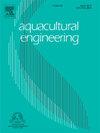Effect of coconut waste and its biochar as hydroponics substrates on system performance and nitrogen transformation in aquaponics
IF 3.6
2区 农林科学
Q2 AGRICULTURAL ENGINEERING
引用次数: 0
Abstract
Aquaponic systems combine aquaculture and hydroponics, creating a circular and sustainable agricultural model that optimizes nutrient utilization. Improving nitrogen use efficiency is crucial for the system’s operational performance and nutrient cycling. This study explored the growth response of cherry tomatoes (Lycopersicon esculentum var. Cerasiforme) to different substrates, including coconut wastes and their biochar and medical stone, in the decoupled aquaponics system, focusing on reusing ammonia, nitrate and nitrite from crucian carp (Carassius auratus) farming effluent. Cherry tomato plants physiological information (plant height, fresh weight of the whole plant, and weight of tomato fruits, etc) and water quality parameters (ammonia nitrogen, nitrite nitrogen and nitrate nitrogen, pH) were monitored across different compartments. Results showed that using 6 mm columnar biochar as a substrate significantly improved the fresh weight, chlorophyll content, and overall weight of tomato plants, and the nitrogen conversion rate from aquaculture effluent to cherry tomatoes exceeded 89 %. Within 76 days, the relative removal rates of ammonia, nitrite and nitrate were above 84.20 %, 95.13 % and 83.98 %, respectively. The biochar composite with a 6 mm particle size demonstrated superior nitrogen immobilization and removal, suggesting a novel approach for the resource utilization of biomass materials. In conclusion, using biochar composite as a cultivation substrate improves nitrogen conversion rates and overall system efficiency of the aquaponic system, providing an effective and sustainable method for biomass material utilization.
求助全文
约1分钟内获得全文
求助全文
来源期刊

Aquacultural Engineering
农林科学-农业工程
CiteScore
8.60
自引率
10.00%
发文量
63
审稿时长
>24 weeks
期刊介绍:
Aquacultural Engineering is concerned with the design and development of effective aquacultural systems for marine and freshwater facilities. The journal aims to apply the knowledge gained from basic research which potentially can be translated into commercial operations.
Problems of scale-up and application of research data involve many parameters, both physical and biological, making it difficult to anticipate the interaction between the unit processes and the cultured animals. Aquacultural Engineering aims to develop this bioengineering interface for aquaculture and welcomes contributions in the following areas:
– Engineering and design of aquaculture facilities
– Engineering-based research studies
– Construction experience and techniques
– In-service experience, commissioning, operation
– Materials selection and their uses
– Quantification of biological data and constraints
 求助内容:
求助内容: 应助结果提醒方式:
应助结果提醒方式:


